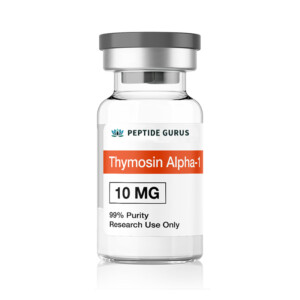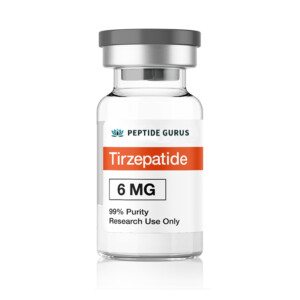In the realm of scientific research and development, the demand for high purity research chemicals has never been greater. These substances are pivotal in various fields, including pharmaceuticals, biotechnology, and academic research. The purity of these chemicals is crucial as it directly impacts the accuracy and reliability of experimental results. High purity research chemicals are defined by their minimal presence of impurities, ensuring that they meet the stringent standards required for advanced scientific applications. Researchers rely on these chemicals to produce consistent and reproducible results, which are essential for advancing knowledge and innovation.
The production of high purity research chemicals involves a meticulous process that ensures their quality and consistency. Manufacturers employ advanced purification techniques such as distillation, crystallization, and chromatography to eliminate impurities. These processes are often accompanied by rigorous quality control measures, including spectroscopy and chromatography analysis, to verify the chemical composition. The purity of research chemicals is typically expressed as a percentage, with high purity chemicals often exceeding 99% purity. This level of precision is necessary to minimize the risk of contamination and ensure the integrity of scientific experiments.
High purity research chemicals play a critical role in the pharmaceutical industry, where they are used in drug development and testing. The purity of these chemicals is vital to ensure the safety and efficacy of new medications. In the early stages of drug development, researchers use high purity chemicals to study the pharmacokinetics and pharmacodynamics of potential drug candidates. These studies help determine how a drug is absorbed, distributed, metabolized, and excreted by the body. Any impurities in the research chemicals could lead to inaccurate data, potentially compromising the safety of the drug under development.

Beyond pharmaceuticals, high purity research chemicals are indispensable in the field of biotechnology. They are used in the development of biotechnological products such as enzymes, antibodies, and vaccines. The purity of these chemicals is crucial for the success of biotechnological processes, as impurities can interfere with biological reactions and compromise product quality. For instance, in the production of monoclonal antibodies, high purity chemicals are required to ensure that the antibodies are produced with the desired specificity and affinity. This precision is essential for the development of effective biotechnological therapies.
In academic research, high purity research chemicals are essential for conducting experiments that advance scientific knowledge. Researchers in fields such as chemistry, biology, and material science rely on these chemicals to conduct experiments with high precision. The presence of impurities can lead to erroneous results, misleading conclusions, and wasted resources. By using high purity chemicals, researchers can ensure that their experiments yield reliable data that contribute to the body of scientific knowledge. This reliability is crucial for publishing research findings and securing funding for future studies.
The demand for high purity research chemicals has led to the growth of a specialized industry dedicated to their production and distribution. Companies that supply these chemicals invest heavily in research and development to improve purification techniques and develop new products. They also focus on ensuring compliance with international standards and regulations, such as those set by the International Organization for Standardization (ISO) and the Good Manufacturing Practice (GMP) guidelines. Compliance with these standards is essential to meet the high expectations of researchers and regulatory bodies.
In recent years, advances in technology have facilitated the production of high purity research chemicals. Innovations in analytical techniques, such as mass spectrometry and nuclear magnetic resonance (NMR) spectroscopy, have enhanced the ability to detect and quantify impurities. These technologies allow manufacturers to achieve higher levels of purity and provide detailed information about the chemical composition of their products. As a result, researchers have access to a wider range of high purity chemicals that meet their specific needs, enabling more sophisticated and accurate scientific investigations.
The environmental impact of producing high purity research chemicals is an important consideration for manufacturers. The purification processes often require significant energy and resources, leading to concerns about sustainability. To address these challenges, companies are exploring green chemistry approaches that minimize waste and reduce the environmental footprint of chemical production. These approaches include the use of renewable resources, the development of more efficient purification methods, and the implementation of recycling and waste management strategies. By adopting sustainable practices, manufacturers can contribute to a more environmentally friendly research chemical industry.

The transportation and storage of high purity research chemicals are critical aspects of maintaining their quality. These chemicals are often sensitive to environmental conditions such as temperature, humidity, and light. To preserve their purity, they must be stored in controlled environments and transported using specialized packaging that protects them from contamination. Manufacturers and distributors must adhere to strict guidelines to ensure that the chemicals remain stable and retain their purity throughout the supply chain. This attention to detail is essential to provide researchers with reliable and high-quality products.
Safety is a paramount concern when handling high purity research chemicals. These substances can pose health risks if not managed properly, necessitating the implementation of safety protocols and training for laboratory personnel. Researchers must use appropriate personal protective equipment (PPE) and follow standard operating procedures to minimize the risk of exposure. Additionally, laboratories must have measures in place for the safe disposal of chemical waste to prevent environmental contamination. By prioritizing safety, researchers can conduct experiments with confidence and protect themselves and the environment from potential hazards.
The regulatory landscape for high purity research chemicals is complex and varies by region. Governments and regulatory bodies have established guidelines to ensure the safe production, distribution, and use of these chemicals. In the United States, the Environmental Protection Agency (EPA) and the Food and Drug Administration (FDA) are two key agencies that oversee the regulation of research chemicals. Compliance with these regulations is essential for companies to operate legally and maintain the trust of their customers. Researchers also rely on these regulations to ensure that the chemicals they use meet the necessary safety and quality standards.
The future of high purity research chemicals is promising, with ongoing advancements in technology and science driving innovation. As researchers continue to push the boundaries of what is possible, the demand for purer and more specialized chemicals will grow. The development of new purification techniques, coupled with the integration of artificial intelligence and machine learning, holds the potential to revolutionize the production of research chemicals. These advancements will enable the creation of chemicals with unprecedented levels of purity and specificity, unlocking new possibilities for scientific discovery.
The role of high purity research chemicals in advancing scientific knowledge cannot be overstated. They are the building blocks of countless experiments and innovations that have shaped modern science and technology. From the development of life-saving medications to the exploration of new materials and technologies, these chemicals are at the forefront of scientific progress. As we continue to explore the unknown, high purity research chemicals will remain an indispensable tool for researchers seeking to unravel the mysteries of the natural world and improve the quality of life for people around the globe.
The importance of collaboration in the field of high purity research chemicals is increasingly recognized. Researchers, manufacturers, and regulatory bodies must work together to address the challenges and opportunities presented by these chemicals. By fostering collaboration, stakeholders can share knowledge, resources, and expertise to improve the quality and availability of high purity chemicals. This collaborative approach is essential for overcoming the technical and regulatory hurdles that can impede progress and for ensuring that researchers have access to the best possible tools for their work.
Education and training are essential components of the high purity research chemicals industry. As the demand for these chemicals grows, so does the need for skilled professionals who understand the intricacies of chemical purification, quality control, and regulatory compliance. Educational institutions and industry organizations play a vital role in providing training programs and resources to prepare the next generation of scientists and technicians. By investing in education, the industry can ensure a steady supply of qualified personnel to support the continued growth and innovation in the field.
The economic impact of the high purity research chemicals industry is significant, contributing to job creation and economic growth. The industry supports a wide range of sectors, including pharmaceuticals, biotechnology, and academia, by providing essential materials for research and development. The demand for high purity chemicals drives investment in manufacturing facilities, research and development, and distribution networks. This economic activity generates revenue and creates employment opportunities, highlighting the importance of the industry to the broader economy.
The ethical considerations surrounding the use of high purity research chemicals are an important aspect of the industry. Researchers and manufacturers must adhere to ethical standards to ensure that their work is conducted responsibly and with integrity. This includes considerations related to the sourcing of raw materials, the treatment of research subjects, and the potential impact of research on society and the environment. By upholding ethical principles, the industry can maintain public trust and support the responsible advancement of scientific knowledge.
The global nature of the high purity research chemicals industry presents both challenges and opportunities. International collaboration and trade are essential for meeting the diverse needs of researchers around the world. However, differences in regulatory frameworks, quality standards, and market dynamics can create barriers to trade and collaboration. To address these challenges, stakeholders must work towards harmonizing standards and regulations, facilitating the exchange of knowledge and resources, and promoting the free flow of high purity chemicals across borders.
The role of digital technology in the high purity research chemicals industry is becoming increasingly important. Digital platforms and tools can enhance the efficiency and transparency of the supply chain, enabling researchers to access information about the availability, quality, and specifications of research chemicals. Online marketplaces and databases provide researchers with a wider range of options and facilitate the comparison of products from different suppliers. By leveraging digital technology, the industry can improve customer satisfaction and support the advancement of scientific research.
The importance of high purity research chemicals in addressing global challenges such as climate change, health, and sustainability is increasingly recognized. These chemicals are used in the development of technologies and solutions that address pressing issues facing society. For example, high purity chemicals are used in the development of renewable energy technologies, such as solar panels and batteries, that contribute to reducing carbon emissions. In the field of healthcare, they are essential for the development of new treatments and therapies that improve health outcomes and quality of life.
In conclusion, high purity research chemicals are a cornerstone of modern scientific research, enabling advancements in a wide range of fields. Their importance cannot be overstated, as they provide the foundation for experiments and innovations that drive progress and improve the quality of life. As the demand for these chemicals continues to grow, the industry must continue to innovate and collaborate to meet the evolving needs of researchers. By prioritizing quality, sustainability, and ethical considerations, the industry can support the responsible and impactful advancement of scientific knowledge.
PeptideGurus is a leading supplier of American-made research peptides, offering top-quality products at competitive prices. With a focus on excellence and customer service, they ensure a secure and convenient ordering process with global shipping.
CONTACT